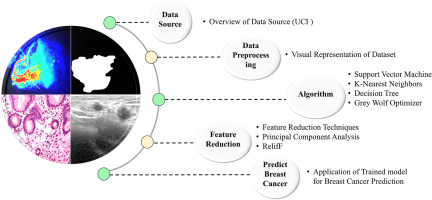
ETH Zurich Researchers Transform AI Efficiency with SIFT Algorithm
In a pioneering advancement towards enhancing the trustworthiness and functionality of artificial intelligence, researchers at ETH Zurich have introduced a new algorithm that allows compact language models to compete with the performance of systems that are up to 40 times their size. This breakthrough has the potential to markedly alter the landscape of the AI industry by diminishing reliance on extensive computational resources without compromising efficacy.
The technique, referred to as SIFT — which stands for Selecting Informative data for Fine-Tuning — tackles one of the most urgent challenges in AI: the unpredictability in large language models (LLMs). Although current AI systems like OpenAI’s ChatGPT can generate impressively coherent responses, they frequently conflate fact with fiction and might present inaccurate information with unwarranted confidence. The ETH Zurich team’s SIFT algorithm provides a promising approach by fundamentally enhancing how LLMs extract and utilize pertinent knowledge.
From Redundant to Relevant: A Smarter Way to Retrieve Information
SIFT innovates within a fundamental aspect of LLM operation — information retrieval. Traditionally, LLMs utilize a technique known as “nearest neighbor retrieval,” which selects content similar to a user’s query based on its frequency in the training data. However, this methodology can falter with nuanced inquiries. For example, a question that seeks information about both Roger Federer’s age and family may yield extensive details about his birthdate but minimal information about his children, due to the disparity in the frequency of references.
SIFT addresses this issue by employing geometric analysis in vector space, scrutinizing the angles between information vectors to ascertain their semantic connection to the query. The smaller the angle, the more complementary (and less redundant) the information becomes. “The angle between the vectors indicates the relevance of the content, and we can use these angles to choose specific data that mitigates uncertainty,” remarks Jonas Hübotter, a PhD researcher at ETH Zurich’s Learning & Adaptive Systems Group and the inventor of SIFT.
Enhancing Domain-Specific Accuracy
This vector-oriented approach not only boosts relevance but also proves particularly advantageous in specialized fields—domains where general AI models frequently struggle due to insufficient training data. “Our algorithm can enhance the general language model of the AI with extra data from the relevant subject area of a question,” Hübotter notes. By executing this form of dynamic enrichment, SIFT customizes AI responses with improved accuracy in areas such as law, engineering, and medicine.
Andreas Krause, Director of the ETH AI Centre and leader of the research group responsible for developing SIFT, highlighted the wider applicability of this innovation. “This method is especially valuable for companies, scientists, or other users who need to apply general AI in specialized fields that are only partially covered or not represented in the AI training data.”
Efficiency Without Compromise
In addition to enhancing the specificity and quality of AI responses, SIFT offers a pragmatic solution to an escalating concern in AI development: the rising costs and complexities involved in training increasingly larger models. SIFT introduces a concept known as “test-time training,” a dynamic feedback loop that modifies how much additional data an AI system processes based on the certainty of a query. If a user’s question is clear and the model feels confident in its answer, only minimal additional data is sourced. For more intricate or vague inquiries, SIFT retrieves just enough supplementary information to refine the response—optimizing computational efficiency and conserving energy.
Benchmark evaluations have shown that small models—sometimes 40 times smaller than leading LLMs—performed comparably to their larger counterparts when equipped with the SIFT algorithm.
The implications are profound. This innovation could not only lower the infrastructure costs for businesses employing AI systems but also introduce a more sustainable model for AI development, lessening the expanding carbon footprint associated with training large models.
Real-World Applications and Broader Impact
SIFT’s effectiveness transcends generative AI. The algorithm’s precise tracking of selected data points to enhance responses may be pivotal in identifying crucial variables across various fields. For instance, in healthcare, it could pinpoint which lab values are most indicative of specific conditions—providing clinicians with actionable insights and bolstering diagnostic decision-making.
“We can monitor which enrichment data SIFT selects,” Krause explained, “They are closely tied to the question and thus particularly pertinent to the subject area.” This transparency not only supports interpretability but may also expedite knowledge discovery in sectors such as finance, environmental modeling, and industrial automation.
Academic Recognition and Future Developments
The research outlining this breakthrough, titled Efficiently Learning at Test-Time: Active Fine-Tuning of LLMs, was presented at the acclaimed International Conference on Learning Representations (ICLR) in Singapore. It was previously awarded Best Scientific Article at the NeurIPS workshop “Finetuning in Modern Machine Learning,” underscoring its importance within the academic community.
Furthermore, the ETH team has made their implementation available as open-source under the aptly named 𝚊𝚌𝚝𝚒𝚟𝚎